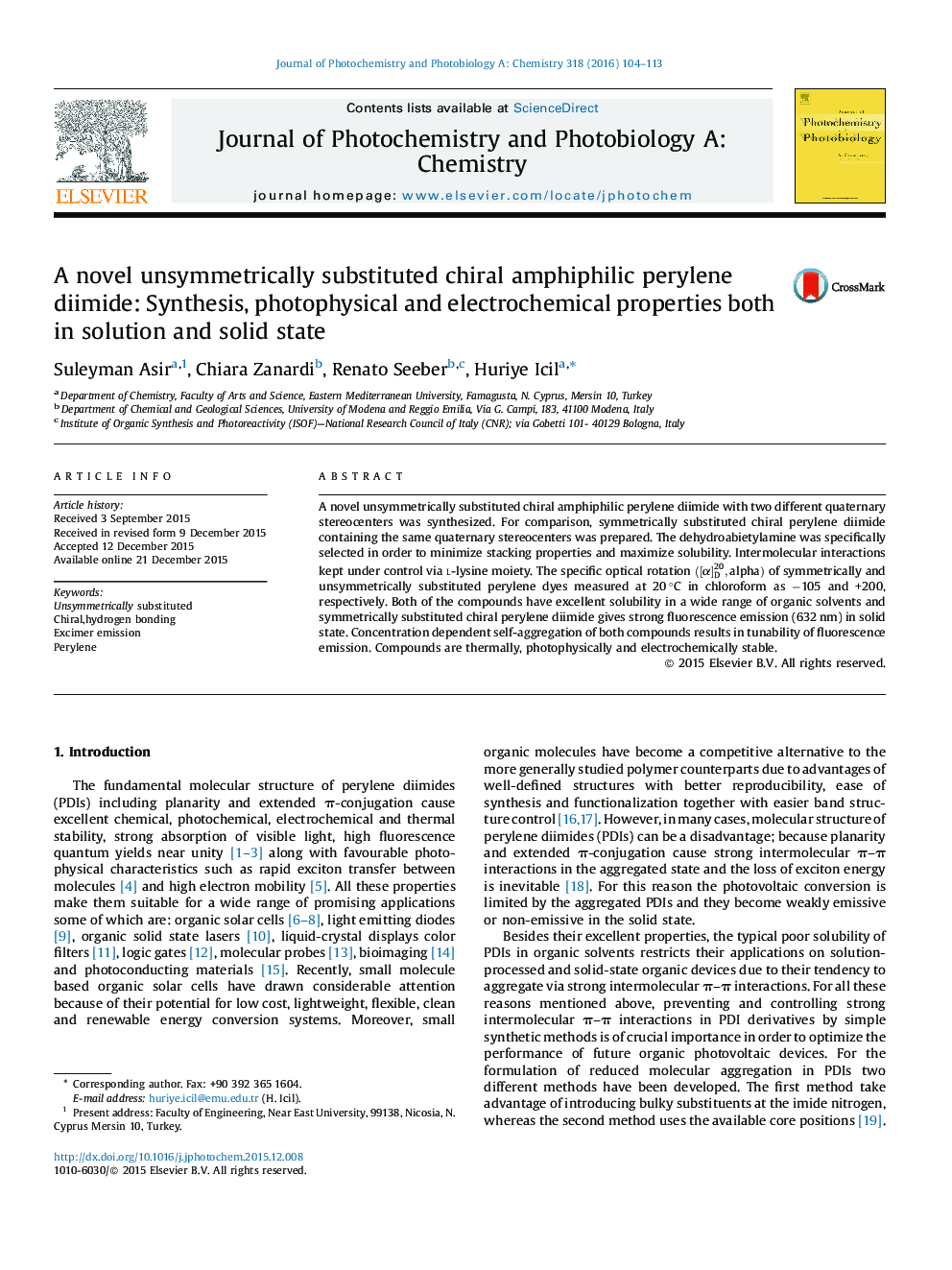| Article ID | Journal | Published Year | Pages | File Type |
|---|---|---|---|---|
| 26218 | Journal of Photochemistry and Photobiology A: Chemistry | 2016 | 10 Pages |
•We synthesized two chiral amphiphilic perylene dye using lipophilic moiety (+)-dehydroabietylamine and hydrophilic substituent l-lysine.•Dehydroabietylamine was specifically selected in order to minimize stacking properties and maximize solubility.•Intermolecular interactions kept under control via l-lysine moiety•The solid state red color emission centered at a wavelength of 632 nm for 1 is promising for further organic light emitting diodes technology.•The concentration dependent emission color observed for 1 and 3 offer challenges in the design of different photonic systems.
A novel unsymmetrically substituted chiral amphiphilic perylene diimide with two different quaternary stereocenters was synthesized. For comparison, symmetrically substituted chiral perylene diimide containing the same quaternary stereocenters was prepared. The dehydroabietylamine was specifically selected in order to minimize stacking properties and maximize solubility. Intermolecular interactions kept under control via l-lysine moiety. The specific optical rotation ([α]D20,alpha) of symmetrically and unsymmetrically substituted perylene dyes measured at 20 °C in chloroform as −105 and +200, respectively. Both of the compounds have excellent solubility in a wide range of organic solvents and symmetrically substituted chiral perylene diimide gives strong fluorescence emission (632 nm) in solid state. Concentration dependent self-aggregation of both compounds results in tunability of fluorescence emission. Compounds are thermally, photophysically and electrochemically stable.
Graphical abstractFigure optionsDownload full-size imageDownload as PowerPoint slide
